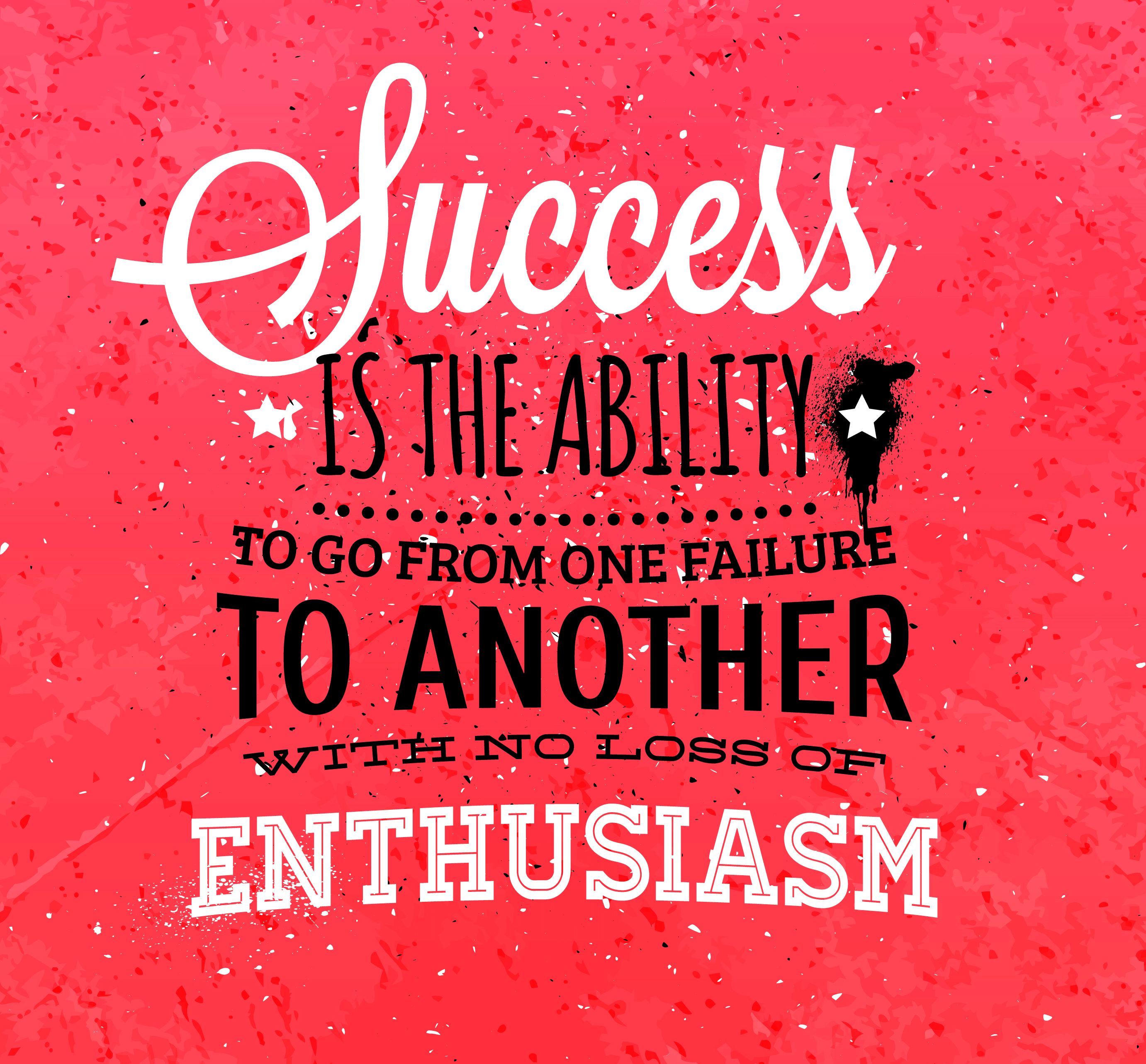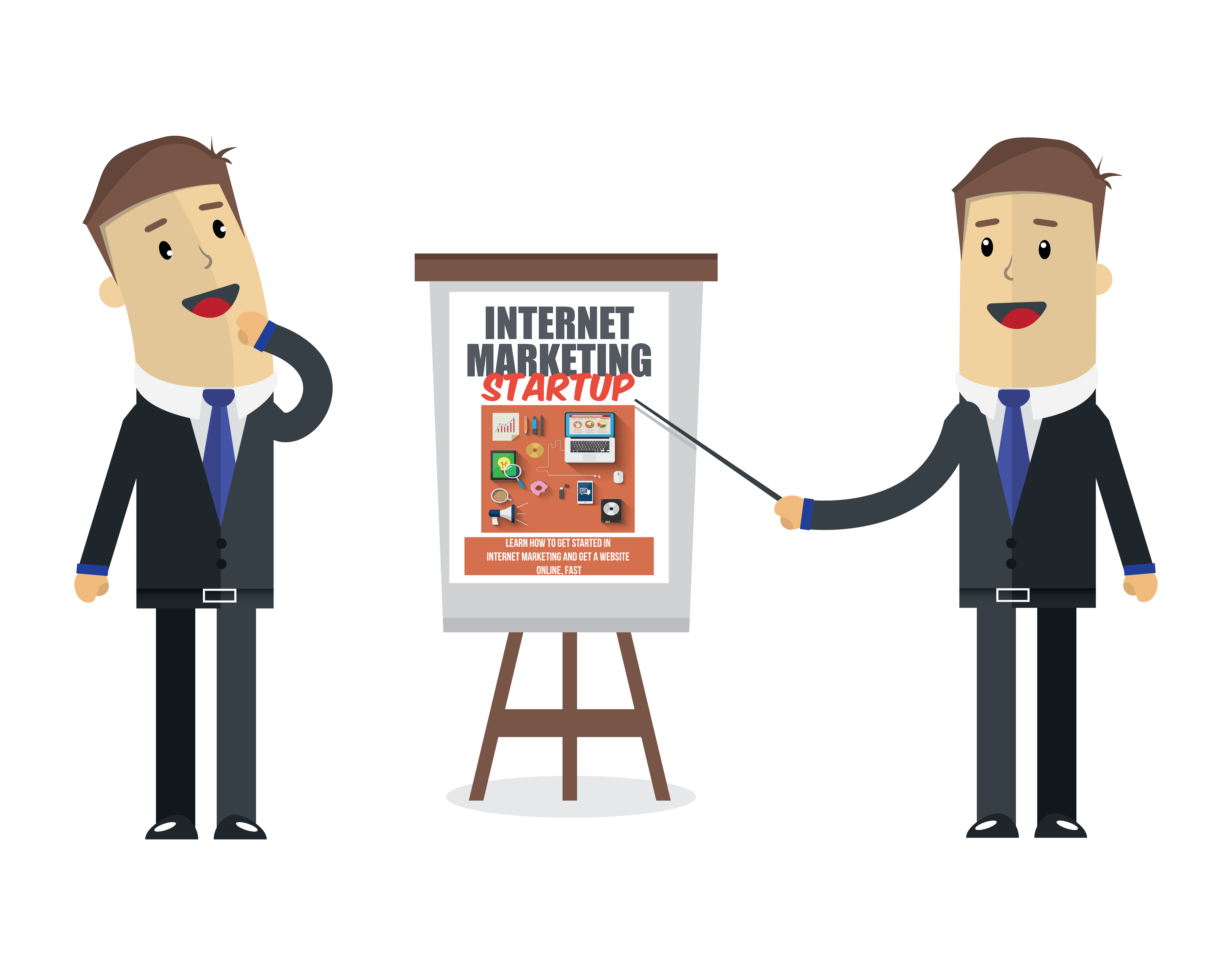information-marketing
6 Little Known Ways To Increase Sales
We all want more sales in our business I’m sure you’ll agree. After all, why did many of us start a business in the first place if not to make money and gain financial freedom to have the time to do the things we want, when we want.
You will often read all about traffic and conversion rate and these are critical to your bottom line, so you need to ensure that your sales process is as optimised as it can possibly be.
Well, please read on to find out about 6 little know ways to increase sales. The good thing is that none of these take much time, but any one of them can add considerable sales to your bottom line. Or try all six, and see your sales explode.
Your Prospects Don’t Trust You

Provide your real contact information, including name, company name, snail mail address (physical is better than P.O.) and phone number.
Why? Because your prospects are afraid you are not who you say you are.
On your ‘about me’ page, provide all of this info again, along with photos of you, any employees you have and maybe even your location. Make it super easy to trust you and you’ll get more sales.
Elevate Your Prospects’ Status to Make More Sales

People want to prove they are better than others and have people look up to them. This isn’t bad, it’s just human nature. And you can use this tidbit of knowledge to make more sales, too.
Have Your Sales Message Come from A Peer

One of the ‘secrets’ to boosting response of your sales message is to have it come from a peer of your ideal prospect.
In other words, you want your message to come from someone of the same group you are selling to.
Are you selling to women in their 40’s? Have your message come from a woman in her 40’s. Selling to investors? Have your message come from another investor, and so forth.
You can likely take any promotion you are running right now, change the message to come from the prospect’s peer, and increase your response considerably.
This technique is even more important when you are selling to someone who is highly skeptical. Nothing melts resistance faster than hearing a message from someone you perceive to be very much like yourself.
Split test this and see the response – I think you’ll be shocked at the increase in sales you experience from this simple technique.
Focus On The Benefits Of The Benefits!

You already know how important benefits are to the selling process.
Features are great, but it’s the benefits that sell.
For example, that weight loss book is pretty, and it has 300 pages – those are features. The benefit is the reader will lose weight if they follow the plan laid out in the book.
But what are the benefits of the benefits?
In the above example, ask yourself what are the benefits to losing weight?
For example:
- Looking better
- Feeling better
- Becoming more attractive
- Living longer
- Fitting into clothes they already own
- More confidence
- Turning heads and getting dates
And so forth.
Talking about just the main benefit – in this case, losing weight – isn’t enough.
Tell Stories

Every product has a story buried somewhere – you just have to dig it out.
For example, look at this headline from John Carlton:
“Amazing Secret Discovered by One-Legged Golfer adds 50 Yards to Your Drives, Eliminates Hooks and Slices… And Can Slash up to 10 Strokes from Your Game Almost Overnight!”
I have zero interest in golf. None. Yet after reading this headline, I want to know about the one-legged golfer.
Now imagine if I did golf – and imagine what all the golfers who read this headline did. Yup – guaranteed, they couldn’t help but keep reading to find out about that one-legged golfer.
That’s the power of a good story.
Encourage Micro-Commitments

The more a person commits to something, the less likely they will change their mind.
For example, if you can get someone to opt-in to two or more of your lists, they are more committed to staying on your lists.
And get this… they are also more likely to make purchases, too.
For example, someone might say they are going to start running. But all they do is say it – they don’t do anything else – and within a week they’ve forgotten all about it.
But if that same person buys new running shoes and clothes, visits running websites, subscribes to a running magazine and joins a running club, then I can about guarantee they’re going to run.
It’s the same with your lists. If you can get subscribers to opt in to multiple lists, they become more committed to you and to the niche or topic itself.
So, let’s say your niche is dogs. You might ask your new subscribers to opt in to a special course on potty training, another course on bad behavior modification, another course just on their particular breed of dog and so forth.
By getting more of these micro-commitments from your readers, you greatly increase the odds they will become your customers and even purchase from you multiple times.
Now how great is that? Fantastic, I think you’ll agree!
OK, there you have it; 6 little know ways to increase sales. Which ones are you going to put into practice today to boost your sales? I hope you will try at least one, if not all 6.
Why You Should Be A Content Creator And Not A Marketer

Labels are important. Most important are the ones that we give ourselves. How you define yourself will color the way you see yourself, and this in turn is going to influence the way that you interact with others, your happiness, your confidence and much more about you.
This is particularly true for people who are entrepreneurs and internet marketers. If you’re someone who works online, then you will be doing something that isn’t easily defined and that many people won’t really understand. What is it you do again? How do you make money without leaving the house??
And it also changes the way you feel about the work you do and the kind of path that you will end up pursuing.
But here’s a thought; have you ever considered shifting the way you describe yourself away from ‘internet marketer’ to ‘content creator’ instead?
Yes? No? Well here are a couple of reasons why you should be a content creator and not a marketer.
What’s in a name?

You might be wondering how you can just go ahead and change your label if you’re still doing the same job. Isn’t a content creator something entirely different from a digital marketer?
Well, not really! In all honesty, they are essentially the same, but the perception is very different.
These days, content marketing is the most effective option for any brand wanting to increase its visibility and status online.
And if you’re a content marketer who creates articles and videos for a blog, then chances are that you have the precise same goals as the marketers: getting your content seen.
The only difference is that a content marketer is someone who puts the ends first, whereas the content creator puts the quality content first. They put the value first. The content creator builds a brand and then promotes that brand with great multimedia content.
The marketer on the other hand looks at the market and asks how they can make money…
Why being a content creator is better for you

The thing is, the content creator – ironically – actually often makes more money.
That’s because they have a brand they believe in and they are putting more work into their content.
Both these things are not lost on readers who will end up wanting to spend more money as a result. And thanks to Google’s more recent changes, they’re not lost on the search algorithms either…
Then there’s the fact that content creators are happier. Why? Because they are working on something they love.
If you’re going to avoid letting this crush you and make you miserable, then you better ensure that you are doing it for the love and not because you have to!
Think about all the most wealthy and famous people online. How did they get there? From pedaling ‘make money’ eBooks? Or by creating an amazing YouTube channel and sharing a vibrant personality and talent for writing and production?
Content creation and marketing go hand in hand and rely heavily on each other, but by labeling yourself as a content creator rather than a marketer will change peoples perception of you, but perhaps more importantly, it may change your perception of yourself and that is priceless!
Affiliate Marketing Myths (The Top 5 Affiliate Marketing Myths)
Affiliate Marketing Myths (The Top 5 Affiliate Marketing Myths)

Bad information keeps many people from making money online.
People give a half-hearted effort to one form of marketing, get disappointed that it didn’t work, and then cry out to the world that it no longer works…
“Email Marketing Is Dead!”
“SEO No Longer Works Thanks to Google…”
“Content Marketing Has Lost Its Luster…”
Or the big one:
“Affiliate Marketing Is for Scammers!”
When something is proclaimed dead or not working any longer, it’s probably because someone was gaming the system and the system owners plugged the hole.
Ethical marketing always works in the long run.
That’s why Affiliate Marketing has worked for decades and will continue to work for the non-scammers of the world.
But the headlines persist, and the myths and misconceptions flourish. Let’s take a look at affiliate marketing myths (the top 5 affiliate marketing myths) and reveal the truth about them!
Shall we begin…?
1) Affiliate Marketing Is Easy…

There’s a misconception out there that the newbie online marketer can grab an affiliate link, put it on their Facebook page, and the money will start rolling in.
Not so fast…
Affiliate marketing like any other business model IS a business.
And it should be treated like a business.
While affiliate marketing may be the exact business model you need as a new entrepreneur, it’s important to understand and accept that it is NOT a get-rich-quick scheme.
Is this beginning to sound like work yet? It should.
Affiliate marketing can be VERY rewarding, but it is not easy, especially if you have no business experience. But affiliate marketing can be best way to learn how to build a business with very low-risk.
Your investment as an affiliate marketer is low because you don’t have any product or delivery costs. Your focus must be on building a market, knowing that market inside out, and learning how to sell.
These are essential skills for any business owner to master.
Driving traffic and measuring conversions to build your marketing list is the primary tool of every affiliate marketer.
2) Affiliate Marketing Doesn’t Work Any More…

The days of throwing a link up on the social marketing sites and making a million dollars over night are gone…if they ever existed.
Social media has heightened the importance of building relationships with your target market, and that can be a slow process.
Your followers and email subscribers must feel a connection with you. If they don’t, they find someone else where that connection is real.
Affiliate marketing not only works with an audience that knows, likes and trusts you, but they will ask for your affiliate link for new products. Sometimes, they feel such a close relationship that they’ll pass around your affiliate link for you.
Affiliate marketing without real relationships (even if they’re automated) is hard but can be done with a lot of effort.
But affiliate marketing with real connections with an audience that has been nurtured and embraced works like a charm because you’re genuinely looking out for their interests.
3) The Competition Is Too Steep In Affiliate Marketing…

First, let’s agree competition is good.
That means there’s a market for the product. If not, no one else would be trying to sell that product.
Competitors can also become your best traffic source. Using the right tools like iSpionage.com, you can target your competitors, and step in front of their traffic with better offers, Facebook ads, or other techniques.
Sound a little cutthroat?
Nope, it’s just business. Once you become the Big Dog, everyone will target you too.
Your job is to offer better bonuses, better services, better support, and better experience to that market. And by doing that, you’re building a better relationship.
Find out how your competitors are building their audience (keyword research) and jump in there to grab that audience yourself.
Business is about competition, so if that bothers you, you probably need to get a job.
4) The More I Promote My Affiliate Links The More Money I’ll Make…

Listen, this one is tricky.
In theory, this is true. But there are other considerations like…
Does your message match the right audience? This is where you’ve got to get good at know your market including their hopes, dreams and issues.
In the consulting world, they call these the FUDs – Fears, Uncertainties and Doubts.
What is your audience trying to do? And how can the solution you put in front of them solve that issue?
Promote to the right audience and you don’t have to “sell them” often because you become part of their go-to-problem-solver while you’re building a relationship.
5) Affiliate Marketing Is High Risk And Low ROI…

Ok. There is risk in any business endeavor. In affiliate marketing, you could make a lot of sales for a product only to have the product owner go out of business.
That’s always a risk.
And the return on investment could be very low, but only because you’re not making sales.
That usually means you don’t have the right message for the right target market. Conversions are much easier and ROI much higher when you convert prospects to customers.
Opponents of affiliate marketing will jump in here and declare you’d be better off building your own products, selling them online and keeping ALL the money.
Here’s the truth about that:
Affiliate marketing is awesome because the risk is extremely low. You don’t have to create a massive infrastructure to support your products. You’re letting someone else take that risk on.
And the low ROI? Wrong.
The potential in affiliate marketing for those people who learn how to build an audience and convert that audience to paying customers is HUGE because it’s a pay-for-performance model!
The more you convert, the more you make and the higher your return.
Of course, like everything else, affiliate marketing only works if you know how to do it correctly.
To keep you on track, it is a great idea to use checklists and if that sounds like a good idea to you then please look at these checklists here: warr.us/NAMSAffChecklists
7 Essential Strategies For Increasing Conversions
7 Essential Strategies For Increasing Conversions

Increasing Conversions Through Engagement

If you want to maximize sales, you need to focus on one primary component of your entire sales funnel and that is in improving visitor engagement!
So, why is visitor engagement so important?
Think of it this way; visitor engagement is probably the strongest indicator as to how a potential customer feels about you, your product or brand.
The more you engage with your visitors, the easier it will be to build brand loyalty and make your vistors feel valued.
And when you manage to do that, these vistors will turn into paying customers who will buy all your products and devote more time and money to you! They’ll decide to choose you over the competition, and they’ll buy from you again and again.
Here are just a few powerful strategies that you should be using to increase engagement on your website:
Combine Action with Rewards

Rewards and incentives such as giveaways, coupons, and bonus products add extra value to a customer’s purchase which will positively impact visitor engagement.
One easy way to set up a reward-style program is to use something like Perkzilla (warr.us/PerkZilla)
PerkZilla is a smart way of grabbing attention, engaging visitors and boosting clicks and sales just by rewarding customers who take action.
Offer Time-Sensitive Coupons & Discounts

You can also offer special discounts and time-sensitive coupon codes in order to combine the use of urgency with making people feel special. This can be a powerful motivator as many people suffer from FOMO (fear of missing out) so by adding a sense of urgency, you are tapping into that fear.
Offer Early Bird Discounts

Reward those who purchase in the early stages of your product launch with the lower pricing or added bonuses.
Tip: You can do both of these tasks easily with a great tool called Conversion Gorilla (warr.us/ConversionGorilla)
Create a NO-RISK Low Cost Front-End Offer

A low cost, front-end offer is the easiest way to engage visitors and transform them into customers because you’re giving them an opportunity to test out your product and get to know your brand without a lot of upfront cost or investment.
In other words, there is no risk to them for simply giving your company a try.
Personalize Your Outreach

Build stronger relationships with your audience by creating marketing campaigns based on location, traffic sources or social media platforms. This used to be virtually impossible
but increasingly clever technology is making these things achievable.
People love receiving personalized offers or being addressed by name or location. It will help you stand out!
Add Visual Magnets To Your Sales Process

Consider integrating infographics or videos into your content so it stands out. Anything you can do to be different that will capture attention quickly is important.
These are just a few ways to improve your customers on-site experience. Can you think of a few more? By doing this you can engage your prospects and hopefully turn them into buyers.
Carry this practice over into you sales pages and you will see an increase in your conversion rate, guaranteed. And talking of sales pages, let’s have a quick look at them whilst we are here 🙂
By the way, if you want to learn more conversion boosting tips, grab my free report here.
How To Test Your Sales Page For Maximum Conversions

Split testing is a way of gauging the effectiveness of specific elements on a sales page or within a sales funnel to improve conversion rates. The idea is that you test ONE element at a time, and run a split testing campaign long enough for both pages to generate an equal number of visitors (or “hits”).
You need to get into the habit of split testing your sales pages so that you have a clear idea as to what’s working and what needs tweaking.
Just a simple change can significantly increase conversion rates but without testing your copy so that you can determine areas that need strengthening, you won’t know what that change should be and this could be the difference between a profitable campaign and a failure; it is that important!
You can literally split test every aspect of your webpage from headlines, pricing, graphics, buttons, layout, color schemes, and more. And you don’t have to just split your sales pages either. You can also split test your email messages, auto-responder follow-ups, and even your blog! If it can be created, it can be tested 🙂
By split testing your pages you will quickly see just what draws your visitors in and what simply pushes them out to the next website. By analyzing this information, you can make little (or big) changes that will boost conversion and send your profits through the roof!
The easiest way to split test your pages is to sign up with a great tool such as Split Test Monkey (warr.us/SplitTestMonkey), which is a powerful tool that takes the grunt-work out of split testing.
Split Test Monkey works for everyone. If you’re trying to grow an email list you’ll be able to use Split Test Monkey to boost your subscriber rates and grow your list faster by testing your landing pages, from the lead magnets to the color of your sign-up buttons.
Here’s an example of a basic split testing campaign:
You create two WebPages, with two different headlines.
You call them SalesPage-1.html and SalesPage-2.html
You then direct people to both pages equally, so that both pages are receiving the same number of hits. You let it do its job for a reasonable amount of time (usually 7-10 days) or until each page has received a specific number of visitors (2000, 4000, etc).
The objective is to have a clear snapshot of which page is preforming best based on conversion rates.
Once you’ve established which page is out-performing the other, you change another element of the “winning” page and comparatively test it against a different component (another area of your sales page, such as your bullet points, opt-in box, placement of graphics, etc).
And here is why split testing is so incredibly important to your business (in case you are still unsure!):
Let’s say that your sales letter is currently converting only one sale out of every 100 visitors you receive.
Let’s pretend that you are selling a low-end product for $20.00.
If only one visitor out of 100 purchases your product, your conversion rate would be 1%.
Now, let’s say you start split testing your sales pages. Perhaps you change the headline so it’s more catchy and instantly your conversion rate increases by .25%.
Now you are generating 5 sales a day for every 400 visitors to your site. You would end up earning $100.00 per day instead of $80.00.
You continue to split test your pages, this time changing the graphics so they load faster and aren’t so cluttered on the page, or you shift your copy so that the first paragraph is directly above the fold.
This increases your conversion rate yet again, this time by .75%.
With just a few small changes you have boosted your conversion rate up by 1% and you are able to turn two visitors out of every 100 into a sale.
Your earnings would have literally doubled!
Sometimes even the smallest, minor changes within a split testing campaign can cause a tremendous boost in revenue, and all with very little work involved! Just don’t forget to test only ONE element at a time, or you won’t know which element is giving you the biggest conversion boost.
That’s it for this post; I hope you found it useful. Now go and create some engaging content for your visitors and sales pages (and don’t forget to test, test, test)!
11 Things You Should Know About Internet Marketing
11 Things You Should Know About Internet Marketing
Using the internet to promote goods and services for your business is generally known as internet marketing or online marketing. This process may also be referred to as electronic marketing, e-marketing and e-commerce.
Internet marketers use a wide variety of strategies to make their business visible to their target audience, or niche. These strategies include SEO (search engine optimization), blogging, direct marketing, email marketing, content marketing, social media marketing and the list goes on.
There are many advantages and disadvantages that come with internet marketing as a business model and we are going to be looking at a few in this article.
Advantages

There are many advantages that come with having an online internet marketing business and these include cost, reach, technology, 24/7 availability of products/services. These are primarily customer advantages, but the business benefits include reliable data collection, quick competitive analysis and personalisation.
1. Cost

Compared to traditional brick and mortar or offline marketing, it is much cheaper to promote your business online using the internet and this is especially true about advertising. In fact, there are many ways to promote your business online for FREE! Unlike traditional ad media such as the TV and newspapers, your online ad spend will be a fraction of what it costs to promote a business traditionally. As well as being cost-effective, internet marketing is also time-saving because it takes less time to find prospects, turn them into buyers (hopefully) and complete their transactions.
As there are little to no overhead costs, the returns on investment (ROI) that comes with online marketing far exceed that of traditional marketing. If you have a good target market and laser focused marketing strategy, you will get higher and (sometimes) instant returns on the money you spend when placing online ads. And don’t forget that many of these techniques are completely free and will still yield good returns.
Staffing costs will also be lower when compared to a more traditional offline business. Hiring costs for virtual assistants is far less than on the high street and you can outsource all over the world!
Cash flow is also often improved. As consumers pay for the product before it is dispatched, this helps to improve the cash flow for the company, making sure that the business can pay any suppliers and other costs (such as online marketing tools) on time.
2. Reach

There’s also the advantage of being able to get in front of a global audience with your online business (unlike a traditional business that is normally restricted within a specific boundary of operation). This opens up so many new opportunities and even allows you to compete on a global scale, even with the big guys! If you already have a traditional business, it is a good idea to move some of your operations online, so that even if your offline office is closed for business, customers and prospects will still be able to visit your website and place their orders.
3. Technology

The amazing technology that powers the web, and also your online business is one of the major benefits of hosting your business online. And the technologies are only going to get better and more sophisticated as time goes by. With reliable auto-responder services, you don’t have to worry about your emails being delivered (email marketing) to your target audience in a timely manner; delivery is almost instant! And you can even schedule emails to go out on a daily/weekly basis on autopilot! On the other hand, the traditional direct mailing system can take days, or even weeks to deliver mail to their destinations, especially when you are mailing globally.
4. Availability

There is no time restriction on when a consumer can shop online because the internet is always available. Many online sales now start at midnight on a particular day encouraging customers to shop all hours of the day. For example, many retailers will start post-Christmas sales on the 26th of December at 00.00, but many consumers are starting to shop even on Christmas Day itself!
5. Data collection

Every time a customer interacts with your business, that interaction is captured. The business can then use this data in a number of ways. To start with, information can be analysed to find out which are the most popular products/services being sold. Secondly the data can be used to assist in segmenting their customers, profiling them and sending customers promotional material based on past buying habits. This can even go a step further with potential customers, as you can now retarget them with ads based upon their browsing history, so they see relevant, targeted ads tempting them back to buy.
There has been much controversy over the amount of information that is being collected online by various companies. This is of particular importance when it comes to social networking sites and there has been many a debate as to whether customers should be able to opt out of that information being shared to third party users.
6. Competitive analysis

Any business owner knows that it is important to analyse your competitors. The internet allows businesses to analyse their competitors’ online strategy quickly and easily. You can keep an eye on what new products they are releasing, react to any price changes, or use the internet to discover all sorts of secondary data on your competition. The internet allows you to react quickly to any change in a competitor’s strategy, and enables you to try to provide a service that at least matches, but preferably beat your competitors. Just keep in mind that they can do this too!
Browsing competitor websites can also provide a wealth of background information about the business such as:
- Accounts and trading activity
- Company objectives, culture and ethos
- The size of the company
- Where they are located physically (if appropriate), number and type of sites that the business operates from
The internet often has information about your competitors (and you) which is prepared by independent organisations which are not connected to competitors so the data should be reliable.
7. Personalisation

When customers log into their accounts, a business can make their web experience almost unique. Using a membership portal which requires them to login is definitely a preferred option here as there are so many benefits, from offering special offers to that particular customer, offering an add-on to their recent purchase, (much like Amazon does), or by allowing the customer to personalise their own products, like Nike does with their trainers. Personalisation allows the business to form stronger bonds online with customers who they don’t have any physical interaction with, and this helps to form long term online relationships thus ensuring customers come back regularly.
Disadvantages

Not everything is rosy! There are always going to be some disadvantages to any type of business and internet/online marketing is no different. Some of these include loneliness, motivation, no face-to-face contact, and once again technology!
1. Loneliness

Do not underestimate this! Many people dream about working from home and living the “laptop lifestyle” but it can be pretty lonely working on your own, especially in the beginning when you may see little reward for your efforts. Try to involve those closest to you such as a spouse, family and friends.
2. Motivation

This is intrinsically linked to point 1. If you are lonely, not seeing much reward for your efforts, and have negative people surrounding you (we all do), it can be very difficult to stay motivated. This is a trial which pretty much ALL online entrepreneurs MUST overcome to become successful, but this is a very real danger and can have a serious impact on your relationships, but you need to hang in there because the rewards are well worth it!
3. Face-to-face contact with customers

This is a real downside to online marketing; the lack of a tangible physical connection. Limited face to face contact really is one of the major drawbacks of internet marketing because nothing beats having a potential customer in front of you. Businesses that are solely based online aren’t usually able to build strong personal rapport with their customers. As a result, there is the possibility that they may lose some of their customers to more traditional competitors who use strong customer service tactics. But the good thing is that more and more people are turning their buying power online for the convenience it provides so all is not lost!
4. Technology(!)

Ah, so you have probably noticed that this can be an advantage AND a disadvantage! The virtual nature of internet marketing increases marketing complexity. When you are just starting out it can quickly become confusing when trying to choose which online marketing techniques will become profitable.
Customers also face complexities in the aspects of shopping online and may have security concerns leading the un-informed consumers to stick to conventional buying rather than enduring such online purchase complexities.
And there are such a myriad of tools to accomplish a particular task that it can quickly become overwhelming. Just look at the number of auto-responder services, domain name providers, hosting providers, page builders and it can quickly lead to despair. In fact, this is probably the number one reason why many budding entrepreneurs give up before they even really get started which is a real shame.
Don’t be one of those people; if you want to learn more about the technical basics of having an online business, I have a fantastic free report that you can download here.
So, there you have it. 11 things you should know about internet marketing broken into the advantages and potential disadvantages of internet marketing and running an online business. I’m sure you will agree that the advantages definitely outweigh any potential pitfalls. So, what are you waiting for? Go out there and claim your slice of the online pie, and if you want to remove the confusion around the technical aspect of running an online business, then download the Internet Marketing Startup Report now.






